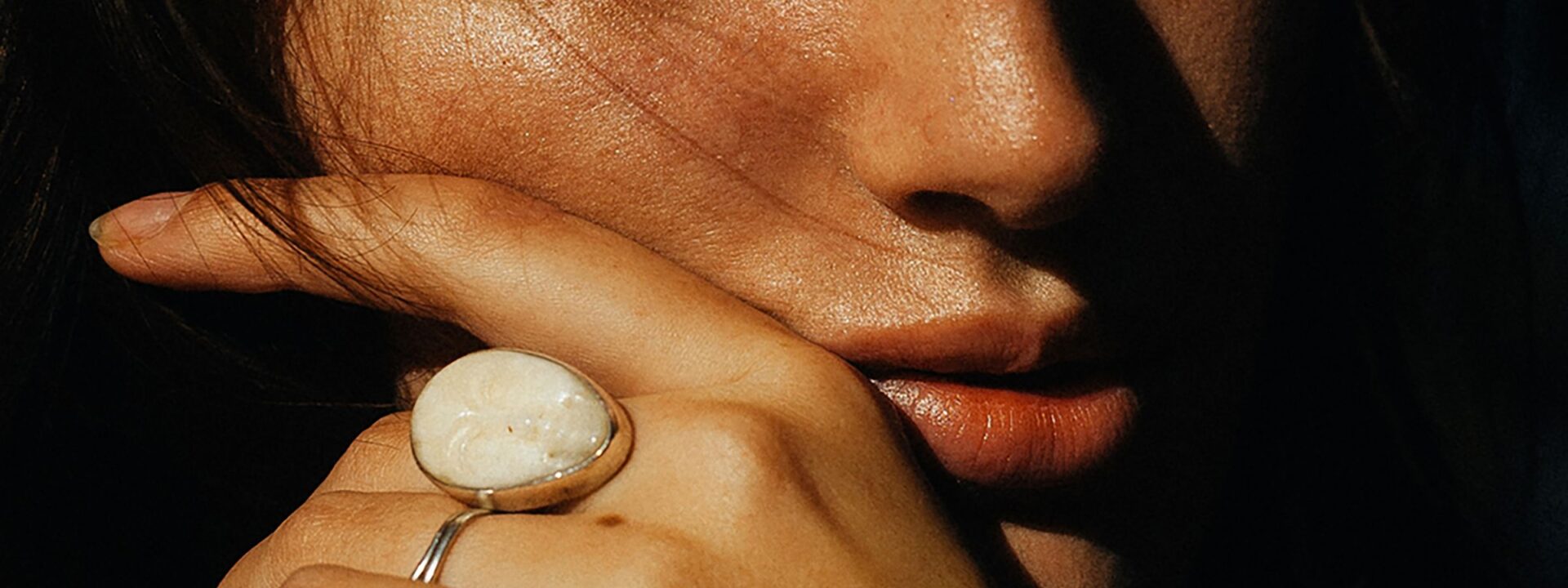Cortisol often gets a bad reputation, but we couldn’t live without it—this stress hormone is essential for survival. The trouble starts when cortisol is produced in excess.
Chronically high cortisol levels can lead to weight gain, insomnia, mood swings, digestive issues, and more. For the skin, too much cortisol can be just as damaging, breaking down collagen and elastin and causing premature aging, wrinkles, and sagging. There’s even a social media trend called “cortisol face,” which describes a puffy, swollen appearance thought to be caused by stress. However, most doctors say true “cortisol face” is rare and usually linked to a medical condition like Cushing’s syndrome.
Still, as beauty and wellness expert Claudia Di Paolo explains, “The skin and scalp are living, biologically active, and emotionally responsive organs.” Excess cortisol can affect the skin, which she refers to as “cutaneous cortisol”—a visible sign of stress that speeds up aging and causes underlying inflammation, even when we don’t notice it.
Symptoms of high cortisol may start subtly before more obvious signs of aging appear. These can include:
– Loss of hydration and dryness
– Increased skin sensitivity
– Dull skin tone
– Slower skin regeneration
It’s important to remember that the skin doesn’t produce cortisol itself, but it responds to stress-related cortisol spikes. The good news is that small daily habits can help restore balance to both body and skin. Here are a few to consider:
The 10-Minute Rule
You don’t need hours for self-care. Even just 10 minutes a day can make a big difference in calming your mind and balancing your skin.
Anti-Inflammatory Foods
While diet won’t directly regulate cortisol, eating anti-inflammatory foods can help manage stress-related inflammation. Focus on antioxidant-rich foods like green tea, omega-3s from fish and nuts, and avoid refined sugars.
Relaxation Practices
If meditation isn’t for you, try conscious breathing. Inhale slowly through your nose, exhale through your mouth, and pay attention to how your body moves with each breath. Repeat.
Sleep
As Tyra Banks famously said, sleep is the best makeup. Di Paolo agrees, noting that quality sleep naturally balances hormones and rejuvenates the skin.
Neuroactive Cosmetics
Unlike most skincare that works on the surface, neuroactive products contain ingredients like saffron extract or cannabinoids that interact with the nervous system. Di Paolo explains that the skin is full of nerve endings connected to our emotions, and these products may help activate relaxation responses. Though research is still developing, the skin-brain connection is real, making these innovative products worth exploring.
Have a beauty or wellness trend you’re curious about? Let us know! Email Vogue’s senior beauty and wellness editor at beauty@vogue.com.
Frequently Asked Questions
Of course Here is a list of helpful FAQs about the topic Is stress showing on your face Try these 5 simple daily habits to help reduce it
General Questions
Q Can you really see stress on someones face
A Yes Stress often shows as tension in the jaw frown lines a tired appearance dull skin or even breakouts
Q How does stress actually affect my skin
A Stress increases the hormone cortisol which can lead to inflammation break down collagen and worsen conditions like acne or eczema
Q Im very busy Are these habits really quick and simple
A Absolutely The suggested habits are designed to be easily incorporated into even the busiest daily routine taking just a few minutes each
Questions About the Habits
Q What are the 5 daily habits
A While the specific five may vary they typically include things like mindful breathing facial massage staying hydrated taking short screen breaks and ensuring quality sleep
Q How does drinking water help with stress on my face
A Hydration plumps up skin cells making fine lines less noticeable and giving your complexion a healthier more radiant look which counteracts stressinduced dullness
Q Whats a simple breathing exercise I can try right now
A Try the 478 method Inhale quietly through your nose for 4 seconds hold your breath for 7 seconds and exhale slowly through your mouth for 8 seconds Repeat 34 times
Q How can a facial massage help
A It relieves muscle tension in your jaw forehead and around your eyescommon areas where we hold stress It also boosts circulation for a natural glow
Troubleshooting and Results
Q How long until I see a difference in my face
A Some benefits like looking more relaxed after breathing or massage are immediate Longerterm skin improvements like reduced dullness may take a few weeks of consistency
Q What if I try these and dont see any change
A Be patient and consistent Stress management is cumulative If facial signs of stress are severe it might also be helpful to look at your overall lifestyle or speak with a dermatologist
